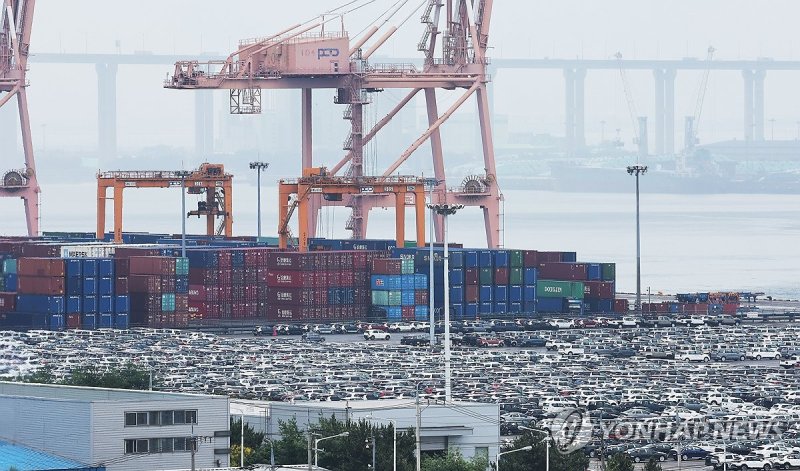Bank of Korea Releases Preliminary International Balance for May 2025
Current Account Surplus of $10.14 Billion… “25 Months of Surplus in a Row”
Semiconductor Exports Increase by 20.6%, Marking Three Consecutive Months of Growth
Foreign Investment in Domestic Stocks Turns to Increase After 10 Months

Yonhap News, ‘[Financial News] The current account surplus for last May exceeded $10 billion, achieving 25 consecutive months of surplus. Despite a sluggish performance in exports of non-IT items such as automobiles, the increasing trend in semiconductor exports continued for three consecutive months, resulting in the third-largest May surplus on record. Meanwhile, foreign investors, who have been maintaining a net purchase trend in domestic stocks since July last year, switched to a net buying trend last month for the first time in 10 months.
On July 4, the Bank of Korea announced that the current account surplus for May 2025 was $10.14 billion. This marks 25 consecutive months of surplus, with the surplus amount being the third-largest for May on record, following May 2021 ($11.31 billion) and May 2016 ($10.49 billion).
The goods account, which holds the largest portion of the current account, recorded a surplus of $10.66 billion, expanding from the previous month’s $8.99 billion and marking 26 consecutive months of surplus.
Exports totaled $56.93 billion, decreasing by 2.9% compared to the same month last year, marking a decline for the first time in four months. While semiconductor exports increased for three consecutive months, declines were recorded in non-IT exports, mainly automobiles, steel, and petroleum products.
In terms of customs clearance, semiconductors (20.6%) and computer peripherals (5.3%) saw increases, whereas wireless communication devices (-10.9%) saw a decrease. For non-IT products, petroleum products (-20.0%), steel products (-9.6%), and passenger cars (-5.6%) all decreased except for pharmaceuticals (12.2%). Geographically, exports decreased in Japan (-9.0%), China (-8.4%), and the U.S. (-8.1%), while increasing in Europe (4.0%) and Southeast Asia (8.2%).
Imports also decreased for the second consecutive month, down to $46.27 billion, a 7.2% decline from the same month last year. While capital goods (4.9%) maintained growth, the decrease in raw materials (-13.7%) expanded due to falling energy prices. Consumer goods increased slightly by 0.4%.
The services account recorded a deficit of $2.28 billion, marking the 25th consecutive month of deficit. The travel account, with a $950 million deficit, contributed to the service account deficit. The deficit increased from the previous month’s $500 million due to an increase in overseas travelers during the May holidays.
The primary income account showed a surplus of $2.15 billion, returning to surplus after a month. The dividend income account shifted to a surplus of $1.59 billion in May from an April deficit of $650 million due to seasonal factors affecting dividend payments. The interest income surplus slightly increased from $690 million in April to $800 million in May.
The financial account, comparing domestic and foreign investments, showed a net asset increase of $6.71 billion, with the increase margin growing from the previous month’s $4.51 billion. This marks 13 consecutive months of increase.
Direct investment saw a $3.8 billion net asset increase, continuing the growth for four months. Domestic outward direct investment increased by $4.13 billion, centered on major industries like automotive.
Securities investment recorded a net asset decrease of $2.68 billion, falling for the first time in 13 months. Domestic outward securities investment increased by $10.09 billion, with foreign stock purchases showing a net buying trend for six consecutive months, though the increase margin narrowed from the previous month’s $5.72 billion. Investment in debt securities expanded from $3.53 billion to $6.31 billion due to increases by non-financial corporations and individuals.
Foreign investment in domestic securities increased by $12.77 billion. While foreign net selling of domestic stocks continued for nine months since July last year, it turned to a net buying trend last month for the first time in 10 months. Investment in domestic debt securities, including medium- to long-term bonds, increased from $6.99 billion to $10.31 billion.
Other investments showed a net asset increase of $7.04 billion, reversing from the previous month’s net asset decrease of $4.62 billion. Derivative financial products decreased by $880 million, and reserve assets decreased by $570 million.’

